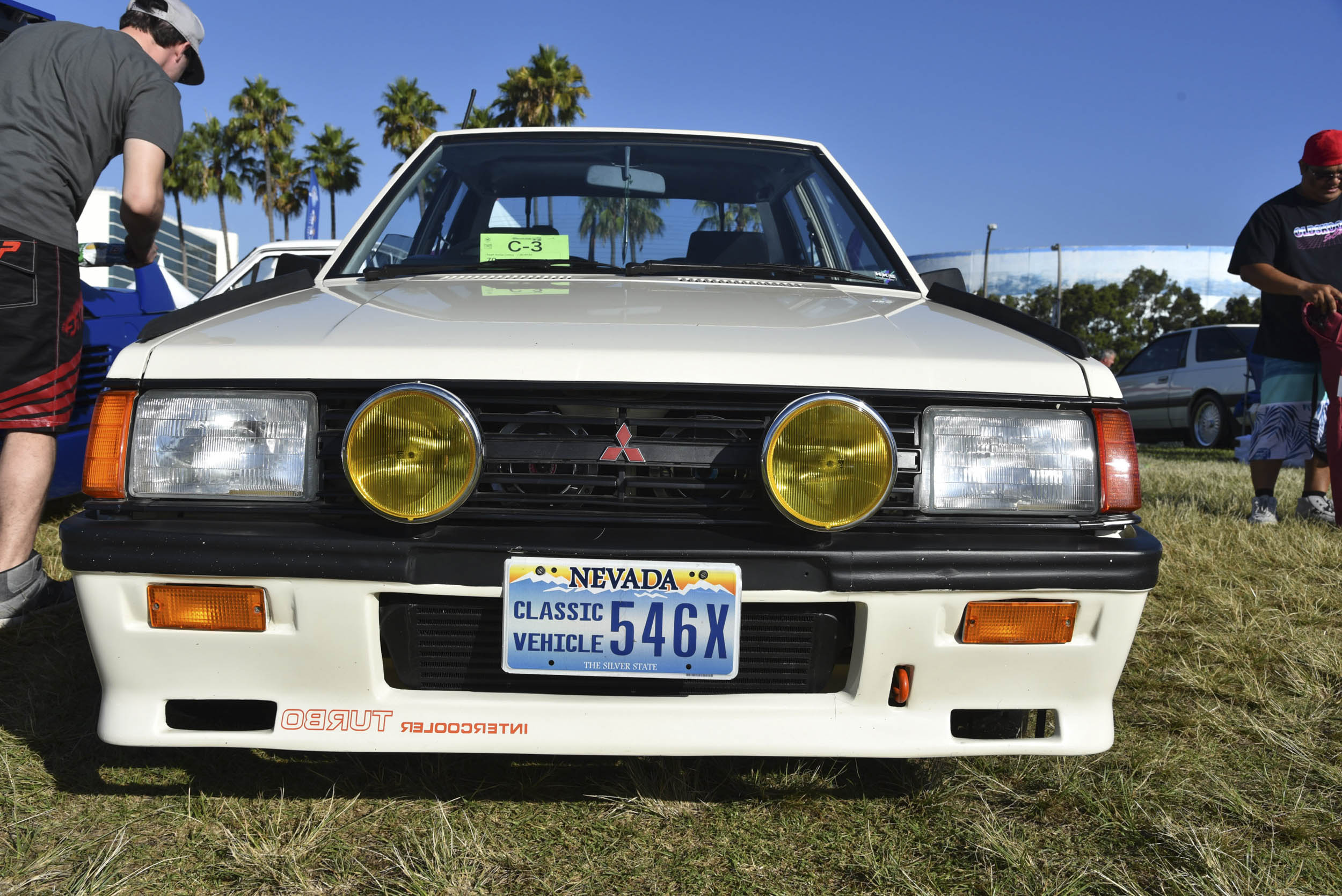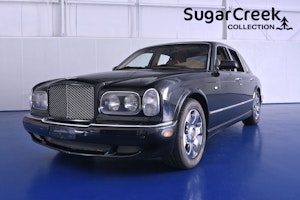Media | Articles
The Japanese Classic Car Show thrives, despite California’s car regulations
The irony of the annual Japanese Classic Car Show, or JCCS as the locals in Southern California call it, is that it celebrates exactly the kind of cars that the state government of California hates. It’s not that Sacramento has anything against the land of the rising sun or its eight native major automakers. Indeed, California is where most of these companies got their first hooks into America and where, until fairly recently, most of their U.S. subsidiaries based their headquarters. And this year’s JCCS, which drew around 600 cars onto an idyllic oceanside lawn in Long Beach just south of downtown LA, opened at 9:00 a.m. to a line of eager showgoers that stretched a long city block.
The problem is that the cars that are at the top of the Japanese collecting heap, besides superstars like the 1960s Toyota 2000GT and Mazda Cosmo, are right-hand-drive domestic-market models from the 1980s and ‘90s. Cars like the gullwing-doored 1992-1995 Autozam AZ-1, a mid-engine two-seat minicar built by Suzuki and sold through Mazda’s upscale retail channel Autozam. Or the 1991-1996 Honda Beat, another mid-engine munchkin built only for Japan’s unique 660-cc Kei-class minicar segment.


And while the AZ-1 and the Beat and the Nissan Skyline and the many forms of hot, home-market Honda Civics and others built up to the year 1993 are now legal to import to the United States under the federal government’s 25-year rolling exemption, they are nonetheless effectively banned in California. To preserve the sanctity of the state’s clear-air regulations, the California Department of Motor Vehicles steadfastly refuses to issue titles and plates to any car built post-1967—when the state adopted the nation’s first vehicle emissions rules—that was not originally manufactured and labeled in compliance with California’s air regulations at the time.
It makes no difference whether that car would pass a modern smog test today. Or indeed that the Honda Beat’s modern 660-cc fuel-injected three-cylinder engine uses probably one-quarter the fuel of 1991 Camaro IROC Z28, which is perfectly legal to bring over state lines. La-La Land just says no.
Marketplace
Buy and sell classics with confidence

California also says no to the kind of hot-rodding that earlier generations of car nuts did freely on their 1950s and ‘60s American cars. Yes, tuner companies make all kinds of performance parts to juice a Toyota Supra or Nissan 300ZX or Mazda RX-7, but don’t have that stuff on your car when you go for the mandatory smog check for cars built after 1975. State law says the engine and emissions equipment must be completely stock at smog-check time or no registration renewal for you.
Yes, the state where the most Japanese car collectors and tuners live, where Japan’s auto industry first began its climb to the lofty heights it enjoys today, also happens to be the state where it is the most difficult to practice the passion. The older folk at those shows where they play the Beach Boys and Jan and Dean on the loudspeakers would throw up their hands, shake their heads, brush it off as typical California government overreach, and walk away.
But here’s the thing: the JCCS crowd is so young—younger and more ethnically diverse than any crowd at any car show you will go to this year, guaranteed. And young people are used to modern-day rules and regulations, as well as computers and black boxes and OBD ports. And they don’t let it stop them.




Walking around the show, you see that the disciples of JDM sneak around with out-of-state plates or somehow obtain dealer plates which are not assigned to specific vehicle registrations and thus can be put on anything. Or the owners just throw on actual Japanese license plates and leave the bystander to guess at the car’s legal status. Tuners simply take their cars off the grid, deregistering them or doing heaven-knows-what to fool the state into believing the car is stock. Some will tell you they “have a guy” who can get anything registered, just send over the paperwork and the dough and don’t ask any questions. Don’t ask them any questions; most don’t want to talk about it.
Well, that’s one part of JCCS. The other part is the bone-stock cars that were sold in California and elsewhere by the hundreds of thousands in the 1970s and 1980s (the show will take cars up to 1995) but are now rarer in Los Angeles than Ferraris. Like a brown 1982 Datsun B210 automatic, a two-door commuter capsule sold on reliability and fuel economy. Or a Honda CVCC, the original Civic hatchback. As with most cheap Japanese cars of that era, they were driven deep into six figures by their first owners—at a time when it was notable for a car to last over 100,000 miles—then sold on to people who managed to milk even more life out of those reliable and fuel-efficient engines until they finally expired from some terminal catastrophic failure and were scrapped.

The few well-preserved survivors of a once mighty nation of cut-buck Japanese imports that ruled California’s roads are to be seen at JCCS. Plus other oddities like the original 1985 Toyota van, a spacey lunchbox hurriedly pulled from the Japanese home market to answer the Chrysler minivan (two were at JCCS). Or the Daihatsu Charade, a fittingly named car considering Daihatsu’s actual prospects in America. Or the Subaru SVX, a sleek Italian-designed, all-wheel-drive grand tourer that proved an expensive failure for Subaru.
The like the crowd itself, the JCCS is an amazing melting pot—of illegal JDM cars next to tented and manicured automaker booths next to wild Bosozoku and stanced monstrosities next to drift machines next to iconic utility trucks next to the cheap mass-produced appliances of an earlier age. And someday the young people circulating in the crowd will be pulling the strings for state of California, and we’ll see if a few laws don’t just ease up a bit.


























